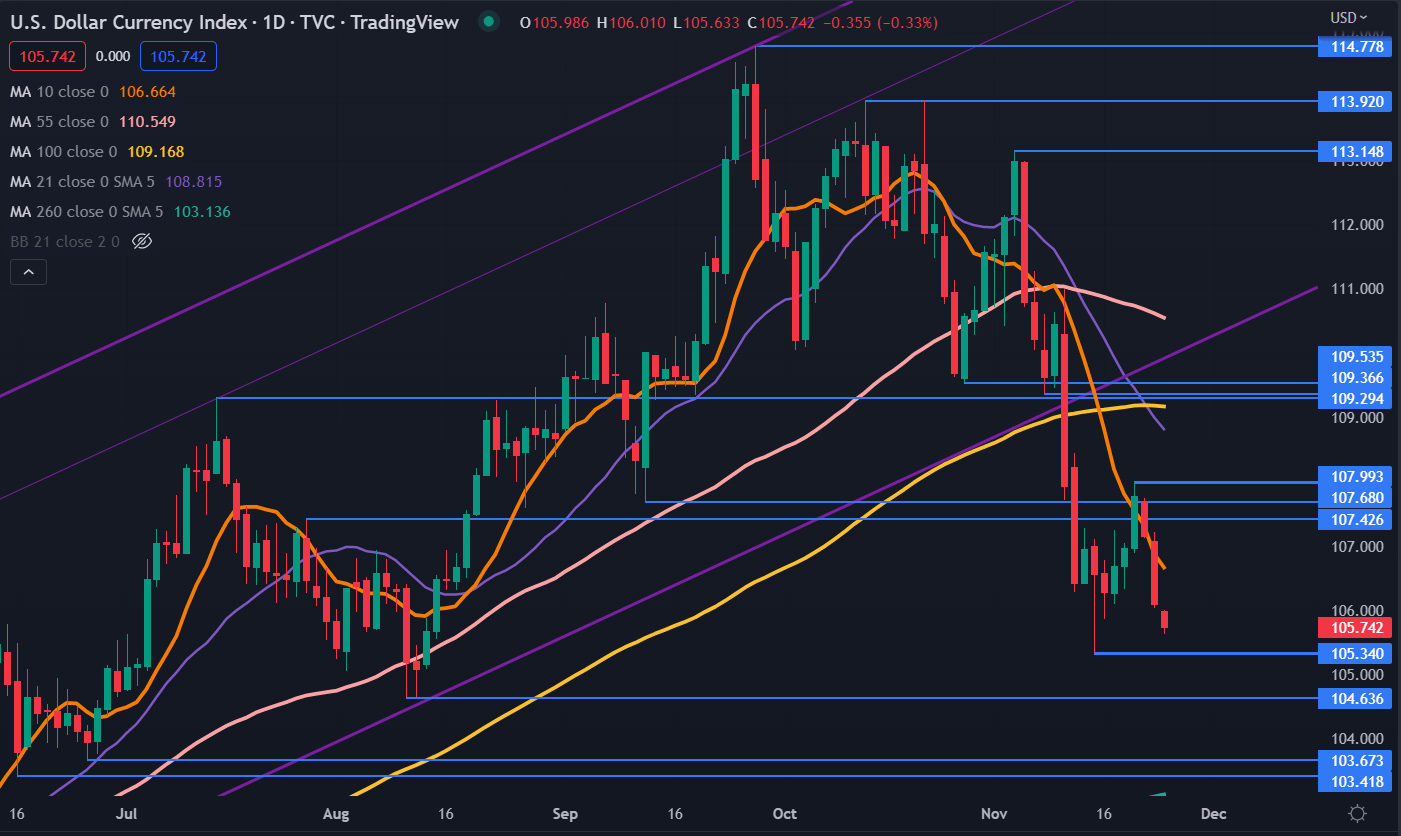The global financial markets are constantly influenced by a wide range of factors, including corporate profitability, geopolitical events, and economic data. Traders search for opportunities to benefit from market turbulence in order to maximize their gains. The DXY index, which often represents the US dollar, is a crucial component that traders pay close attention to. The DXY index, commonly referred to as the U.S. Dollar Index, measures the value of the U.S. dollar in relation to a basket of significant currencies. With a focus on how the DXY index influences trading strategies and market volatility, this article, in partnership with Tradingview.com, will investigate the art of trading the news in volatile markets. Understanding how the DXY index and related news may impact market movements may help traders position themselves to take advantage of opportunities and successfully navigate uncertain market conditions.
Knowing Market Volatility and the DXY Index’s Function

Source: ig.com
Market volatility is the term used to describe the abrupt and significant price movements that take place on financial markets. It is impacted by a variety of factors, including as the release of economic data, changes in geopolitics, and market sentiment. The DXY index, which is crucial for comprehending market volatility, reflects the performance of the U.S. dollar, a significant currency in international trade and finance.
A weighted average of exchange rates between the U.S. dollar and a number of important currencies, such as the euro, yen, British pound, Canadian dollar, Swedish krona, and Swiss franc, makes up the DXY index. Changes in the DXY index reflect the relative strength or weakness of the US dollar compared to other currencies.
Significant changes to the DXY index might have a major impact on global financial markets. A stronger U.S. dollar, which is reflected by a rising DXY index, may increase market volatility since it affects international trade, business profitability, and investment flows. However, a falling dollar might also increase volatility and open up new trading opportunities.
Trading the News in Volatile Markets using the DXY Index: Strategies

Source: businesstoday.com.tw
Trading the news in volatile markets requires careful planning and the ability to adapt to rapidly changing conditions. When incorporating the DXY index into trading techniques, traders may use a range of ways to effectively manage market volatility. Here are some key strategies to keep in mind:
- Monitoring DXY Index Movements: Keep a close eye on the DXY index to gauge the strength or weakness of the US dollar. Significant fluctuations in the index may provide enlightening data about the state of the market and potential trading opportunities.
- Examine the relationships between the DXY index and other financial products including currency pairings, commodities, and stock market indexes. Finding possible trading opportunities or hedging tactics may be made easier by comprehending these linkages.
- Fundamental Analysis: Keep abreast of important newsworthy events and upcoming economic data releases that might affect the DXY index. Economic data points like GDP numbers, non-farm payroll statistics, and central bank statements may have a big impact on how much the U.S. dollar is worth and how volatile the market will be as a result.
- Technical Analysis: To find probable entry and exit points for trades involving the DXY index and associated products, use technical indicators and chart patterns. Moving averages, support and resistance levels, and trend lines are examples of technical analysis techniques that may be used to identify market trends and price reversals.
Establish and follow risk management procedures to reduce possible losses in erratic market circumstances. To safeguard gains, place stop-loss orders, choose suitable position sizes, and think about utilizing trailing stops. For long-term success, maintaining discipline and controlling risk are essential.
Mitigating Risks and Maximizing Opportunities in Volatile Markets

Source: linkedin.com
When it comes to news trading in volatile markets, risk management is crucial. The unpredictability of market reactions to news releases can result in significant losses if not approached with caution. One effective way to mitigate risks is through the use of stop-loss orders. These orders allow traders to automatically exit a position if the market moves against them beyond a predetermined level. By setting appropriate stop-loss levels based on their risk tolerance and market analysis, traders can limit potential losses and protect their capital.
Furthermore, diversification is another key element in managing market volatility. Spreading investments across different asset classes, sectors, and geographic regions can help minimize the impact of adverse market movements. When one investment underperforms, others may offset the losses, providing a more balanced portfolio. Additionally, diversifying the time horizon of investments can be beneficial. Combining short-term trades with longer-term investments can help capture both immediate market fluctuations and the potential for sustained growth.
Lessons from Historical Market Volatility

Source: linkedin.com
History has shown us that market volatility is not a new phenomenon. Throughout the years, markets have experienced various periods of turbulence and uncertainty, offering valuable lessons for traders. One crucial lesson is the importance of emotional discipline. During volatile times, fear and greed can cloud judgment and lead to irrational decision-making. Successful traders remain calm and objective, basing their actions on thorough analysis rather than emotional reactions. By sticking to a well-defined trading plan and maintaining emotional discipline, traders can navigate through turbulent times with more confidence and clarity.
Another lesson from historical market volatility is the significance of adaptability. Markets are constantly evolving, influenced by a myriad of factors such as technological advancements, geopolitical events, and economic shifts. Traders who can adapt their strategies to changing market conditions are more likely to thrive. This adaptability may involve incorporating new trading techniques, adjusting risk management approaches, or exploring alternative asset classes. By staying flexible and open to change, traders can position themselves to take advantage of new opportunities as they arise.
Conclusion
Market volatility is a constant issue in the trading world. A thorough grasp of market dynamics and successful opportunity-capture techniques are essential for navigating uncertain times. Considering the effect of the performance of the U.S. dollar on market volatility, using the DXY index in trading techniques gives a further layer of knowledge.
Traders may more confidently handle market volatility by regularly monitoring the DXY index, doing in-depth fundamental and technical research, and putting risk management strategies into practice. Additionally, keeping up with news developments, economic indicators, and how they affect the DXY index gives traders important information they may use to make wise trading choices.







